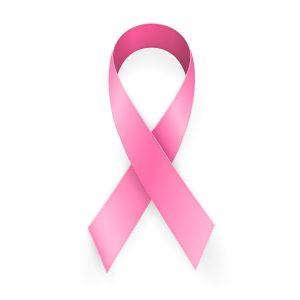Breast Cancer Awareness Month: Resources and Information

Key Facts:
- Lifetime risk: About 1 in 8 U.S. women will develop invasive breast cancer during her lifetime.
- Early detection: When localized breast cancer is found early, the 5-year relative survival rate is 99 %.
- Screening gap: Screening participation dropped by roughly 6 % during the COVID-19 pandemic, leaving many women overdue for mammograms.
- Equity issue: Black women are 40 % more likely to die from breast cancer than White women, underscoring the need for equitable access to care.
Editor's Note
This article is part of the BHM Healthcare Awareness Series, designed to provide quick, ready-to-use content and links to official resources for internal staff communications, patient education, and social media. Feel free to copy, adapt, and share.
Observation Date
Month of October
History & Impact
Breast Cancer Awareness Month (BCAM) began in 1985 as a joint effort between the American Cancer Society and the pharmaceutical division of Imperial Chemical Industries (now AstraZeneca) to promote mammography and early detection. The campaign gained iconic visibility when the pink ribbon—first distributed by the Susan G. Komen Foundation at a 1991 race—was popularized nationwide in 1992 through a partnership between Estée Lauder and Self magazine.
Today, BCAM is observed every October with “pink”–themed events, educational campaigns, and fundraising activities. Healthcare systems, public-health agencies, major corporations, sports leagues (e.g., the NFL’s “Crucial Catch”), and community organizations host walks, mobile-mammography drives, social-media challenges, and workplace wellness initiatives.
While there is no “official” sponsor, the most recognized and active sponsors include the American Cancer Society, Susan G. Komen, the National Breast Cancer Foundation, Estée Lauder Companies, and the CDC’s National Breast and Cervical Cancer Early Detection Program, all working together to boost screening rates, fund research, and support those affected by breast cancer.
Why it Matters
Breast cancer remains the most commonly diagnosed cancer in women worldwide and early detection dramatically improves survival rates. Healthcare organizations play a pivotal role in removing screening barriers and ensuring timely treatment, ultimately reducing mortality as well as costs associated with advanced disease.
Quick Actions for Your Organization
For Leadership
- Establish or expand organization-wide breast cancer screening programs with no-cost mammography for employees and community members.
- Forge partnerships with local imaging centers and nonprofit groups to provide mobile mammography services in underserved areas.
Find local imaging centers here
For Implementation Teams
- Launch a multichannel awareness campaign (intranet, email, posters) that highlights screening guidelines and available resources.
- Host on-site or virtual lunch-and-learn sessions with oncologists or nurse navigators to answer common questions.
- Coordinate Pink Day events in October to encourage staff participation and share survivor stories that resonate with patients and employees alike.
Resources
Ready-to-Use Assets
The following links provide resources & information for creating internal or external campaigns to support or promote this healthcare observance. Please vet these resources for alignment with your organization.

Talking Points
Copy & Paste Friendly
- “Early detection saves lives: Schedule your routine mammogram today.”
- “Breast cancer caught early is 99 % survivable—don’t delay screening.”
- “Support equitable care by promoting low- or no-cost mammography in your community.”
- “Accessibility Is key – seek out low- or no-cost mammography in your community.”
Disclaimer: Please verify all information, usage rights, and related guidelines with the official observance organizers and your organization’s policies to ensure proper alignment.
Frequently Asked Questions (FAQ)
Q: Why do we wear pink for breast cancer awareness campaigns?
A: Pink became the universal symbol for breast cancer awareness in the early 1990s when advocacy groups adopted the pink ribbon to promote solidarity and visibility. Using pink in events, graphics, and merchandise immediately signals support, makes materials easy to recognize, and unifies staff and community outreach around a single, memorable brand.
Q: Why do we celebrate Breast Cancer Awareness Month in October?
A: October was designated Breast Cancer Awareness Month in 1985 through an American Cancer Society initiative aimed at boosting mammography rates. Holding the observance in October aligns organizations with national media coverage, global events, and year-end benefits discussions—maximizing audience reach and encouraging people to schedule screenings before their annual deductible resets.
Q: What operational metrics should we track to measure the success of our Breast Cancer Awareness Month activities?
A: Key indicators include the number of mammogram appointments scheduled or completed, employee participation in on-site events, engagement rates on intranet or social media posts (click-throughs, shares, comments), and utilization of screening incentives or vouchers. Monitoring these metrics helps operational teams refine future campaigns and demonstrate ROI to leadership.
Partner with BHM Healthcare Solutions
With over 20 years in the industry, BHM Healthcare Solutions is committed to providing consulting and review services that help streamline clinical, financial, and operational processes to improve care delivery and organizational performance.
We bring the expertise, strategy, and capacity that healthcare organizations need to navigate today’s challenges – so they can focus on helping others.
Are you ready to make the shift to a more effective process?
